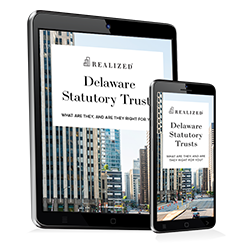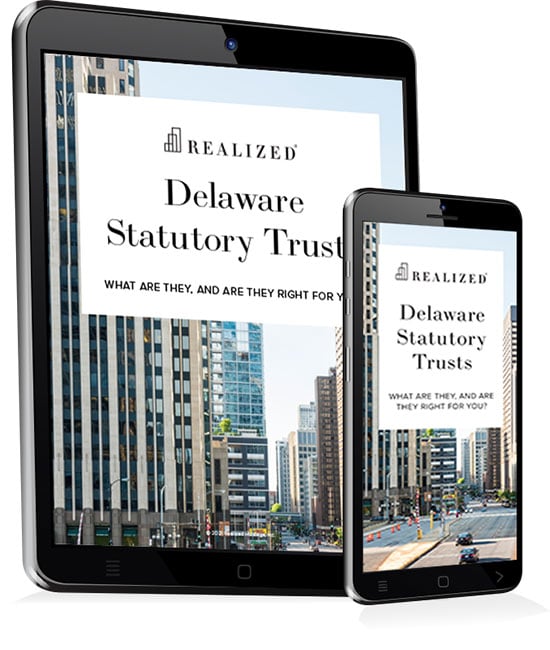.jpg?width=1254&height=836&name=iStock-1888945098%20(1).jpg)
Investing in real estate through a Delaware Statutory Trust (DST) offers significant advantages, especially for those seeking passive income and tax benefits. Combining this strategy with a Self-Directed Individual Retirement Account (IRA) allows investors to tap into real estate opportunities while maintaining the tax advantages of their retirement accounts. Here’s a step-by-step guide on how to achieve this, along with industry-specific terms and examples.
What Is a Self-Directed IRA?
A Self-Directed IRA is a type of retirement account that allows you to invest in a wide range of alternative assets beyond stocks and bonds. These accounts are managed by a custodian but give the investor the freedom to direct investments. Popular assets include real estate, private equity, and DSTs.
Steps to Invest in a DST Using a Self-Directed IRA
- Set Up a Self-Directed IRA
- Open a Self-Directed IRA with a qualified custodian that supports alternative asset investments. Examples of industry-leading custodians include Equity Trust and Entrust Group.
- Fund the IRA by making new contributions, transferring or rolling over funds from an existing retirement account, such as a 401(k) or traditional IRA.
- Identify a DST Investment Opportunity
- Work with a trusted sponsor or broker specializing in DSTs. Examples of sponsors include Inland Real Estate Group or Kay Properties & Investments which curate DSTs aligned with specific investor goals, such as income stability or growth.
- Conduct Due Diligence
- Review the Private Placement Memorandum (PPM) for the DST to understand the property type, projected returns, fees, and risks.
- Ensure the investment complies with IRS rules for IRA investments to avoid prohibited transactions.
- Direct the Custodian to Purchase the DST
- Once you’ve selected a DST, instruct your IRA custodian to execute the purchase on behalf of your Self-Directed IRA.
- The DST investment will be titled in the name of the IRA, not in your personal name. For example, the title might read: “ABC Custodian FBO [Your Name] IRA.”
- Receive Tax-Deferred Returns
- Income generated from the DST, such as rental payments or profits from a property sale, flows back into the Self-Directed IRA. These earnings are either tax-deferred (traditional IRA) or tax-free (Roth IRA), depending on the account type.
Benefits of Investing in a DST with a Self-Directed IRA
Here are the some of key benefits:
- Diversification
- DSTs offer access to high-quality real estate assets such as multifamily apartments, office buildings, or industrial facilities, often spread across multiple locations.
- Passive Income
- DSTs are professionally managed, relieving investors of property management responsibilities while providing consistent income streams.
- Tax Advantages
- Combining a DST with a Self-Directed IRA enhances tax benefits. For example, income within the IRA grows tax-deferred or tax-free, depending on the account type.
- Accessibility for 1031 Exchanges
- DSTs are ideal for those seeking to complete a 1031 exchange. While IRAs themselves cannot directly execute 1031 exchanges, investing in a DST within an IRA mimics the tax-deferred benefits.
Risks of Investing in a DST with a Self-Directed IRA
Here are some of the key risks:
1. Illiquidity
- Risk: DST investments are typically long-term and illiquid, with holding periods ranging from 5 to 10 years or more. Early withdrawal or exit options are limited, and selling your interest in a DST can be challenging, especially within an SDIRA.
- Impact: This lack of liquidity may conflict with your retirement needs if you require funds before the DST’s exit strategy is executed.
2. Market and Economic Risks
- Risk: DSTs are subject to real estate market fluctuations, tenant defaults, and economic downturns that can negatively impact property values and income.
- Impact: Lower rental income or property devaluation could reduce distributions to your SDIRA and the overall value of your investment.
3. Sponsor and Management Risk
- Risk: The success of a DST heavily depends on the experience and performance of the sponsor or trustee managing the property. Poor management, misaligned incentives, or conflicts of interest can harm investment performance.
- Impact: Incompetent management can lead to poor tenant selection, inefficient operations, or lower-than-expected returns.
4. Fees and Costs
- Risk: DSTs and SDIRAs often involve high fees, including setup costs, custodian fees, sponsor fees, and property management fees.
- Impact: These fees can erode returns, especially if the DST’s performance is lower than anticipated.
Hypothetical Example
Consider Sarah, a real estate investor with $500,000 in her Self-Directed IRA. She identifies a DST offering shares in a Class A multifamily apartment building in a growing metropolitan area. After reviewing the PPM, she instructs her custodian to invest $250,000 in the DST. Over the next five years, Sarah’s IRA receives quarterly distributions totaling $100,000. When the property is sold, the proceeds, including $50,000 in appreciation, flow back into her IRA, growing her retirement savings tax-deferred.
Industry-Specific Terms to Know
- PPM (Private Placement Memorandum): A legal document that provides details about an investment offering, including risks and financial projections.
- Custodian: A financial institution that manages the IRA and ensures compliance with IRS regulations.
- FBO (For Benefit Of): Indicates that the investment is owned by the IRA on behalf of the account holder.
- Prohibited Transactions: Actions like self-dealing or using IRA assets for personal benefit, which can disqualify the IRA’s tax advantages.
Final Thoughts
Investing in a DST through a Self-Directed IRA can be a powerful way to potentially grow retirement savings while diversifying into passive real estate. However, it’s essential to work with experienced custodians, sponsors, and advisors to ensure compliance with tax laws and alignment with your investment goals. With proper planning, this strategy can offer significant long-term benefits.
Sponsors and custodians referenced herein are for example purposes only and should not be considered recommendations. The tax and estate planning information offered by the advisor is general in nature. It is provided for informational purposes only and should not be construed as legal or tax advice. Always consult an attorney or tax professional regarding your specific legal or tax situation.



